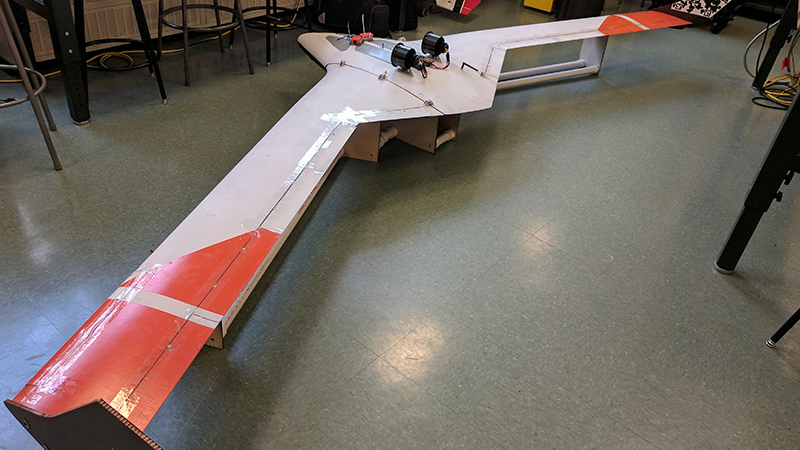Stay Up to Date
Submit your email address to receive the latest industry and Aerospace America news.
The Multidisciplinary Design Optimization Technical Committee provides a forum for those active in development, application and teaching of a formal design methodology based on the integration of disciplinary analyses and sensitivity analyses, optimization and artificial intelligence.
In June, Mike Delaney, vice president and general manager of airplane development at Boeing Commercial Airplanes, gave Aviation Week & Space Technology a succinct description of the importance of multidisciplinary design optimization: “Using multidisciplinary design optimization and model-based systems engineering, Boeing is closely analyzing the design, construction and testing of the new midsize airplane in advance of any formal go-ahead decision. Today we are very early in a program that’s not launched, and we already know what the production system looks like.”
This year, MDO impacted aerospace R&D through NASA’s OpenMDAO. This software was used in new studies, including coupled propulsion-power-thermal-trajectory analysis for NASA’s X-57 experimental aircraft and fully coupled propulsion-aerodynamic simulation of a boundary-layer ingestion tail-cone-thrust configuration.
The European CleanSky2 Initiative’s Modeling and Simulation Tools for System Integration on Aircraft project, called MISSION for short, developed and demonstrated a simulation environment to harmoniously integrate different models and tools. MISSION combines MDO methodologies and model-based system engineering to develop an integrated framework for design, development and validation of aircraft systems.
Academic researchers made important steps this year to advance the robustness and applicability of MDO methods. One challenge is that complex simulations often produce inaccurate sensitivities. To address this, in August, Rensselaer Polytechnic Institute developed a novel gradient-based algorithm for noisy or inaccurate data. Another challenge is managing disparate multidisciplinary data sources in the design process. In August, McGill University Systems Optimization Lab presented methods for adequacy-based management of model ensembles in optimization. An Air Force Office of Scientific Research Multidisciplinary University Research Initiative led by MIT plans to publish a toolbox of methods for multi-information source management, including Bayesian optimization methods from Cornell, Santa Fe Institute and MIT, at the Conference on Neural Information Processing Systems in California in December. The team also developed sequential information source fusion, led by Texas A&M.
Topology optimization presents another exciting area. The Multiscale, Multiphysics Design Optimization Laboratory at the University of California, San Diego, in July developed a multiscale optimization framework that simultaneously optimizes an integrated material and structural system. This links directly with rising interests in integrated computational materials engineering. Southampton University developed methods and software for design optimization in the presence of topological variations, with application to gas turbine combustion systems and rapid optimization of aircraft across ranges of topologies.
New applications in MDO highlight emerging opportunities for improving system design processes. The Design and Optimization of Energy Systems Laboratory at the University of Texas, Dallas, applied MDO to the design of lithium-ion battery thermal management systems in electric vehicles; University of Illinois Engineering System Design Lab investigated co-design of wind farm layout and control design. The Multidisciplinary Analysis and Design Center for Advanced Vehicles at Virginia Tech is collaborating with University of Minnesota, Aurora Flight Sciences, STI Inc., DKS and Associates, and CMSoft to optimize X-56 type aircraft under NASA’s Performance Adaptive Aeroelastic Program. The team has fabricated and was making plans to initiate flight testing of a 50 percent scale X-56 model to study active control of flexible aircraft.
Georgia Tech developed FUNtoFEM, a high-fidelity aeroelastic coupling framework for NASA’s FUN3D code, for adjoint-based MDO of fixed-wing or rotorcraft configurations. The University of Michigan developed OpenAeroStruct, an open-source low-fidelity wing aerostructural optimization tool. OpenAeroStruct was used for educational purposes in MDO courses and served as a benchmark for research on coupled system solvers, MDO architectures and uncertainty quantification. The University of Michigan and NASA developed the uCRM, an open model for high-fidelity aerostructural studies based on NASA’s Common Research Model, which is representative of long-range twin-aisle transport aircraft.
Related Posts
Stay Up to Date
Submit your email address to receive the latest industry and Aerospace America news.




